Xiaomi has managed to dominate the Indian smartphone market since past several quarters, thanks to its budget and value-for-money smartphones. The Redmi brand from Xiaomi has been quite popular in India for the same reason and most of its offerings were under ₹17,000.
However, it seems like Xiaomi is now shifting gears in the Indian market with the launch of the Redmi K20 series smartphones. The Redmi brand, which is well-known and successful because of the budget phones, is now offering a mid-range smartphone in the form of Redmi K20.
The Xiaomi Redmi K20 has all the features that you would want in your new smartphone — full-screen display without any notches, an in-display fingerprint sensor, the triple camera setup on the back and a pop-up selfie camera.
While the phone looks good on paper, how does it perform in the real world? The phone’s pricing starts at ₹21,990, it is worth spending that much on the Redmi K20 or is there any better option? Let’s find out in this review.
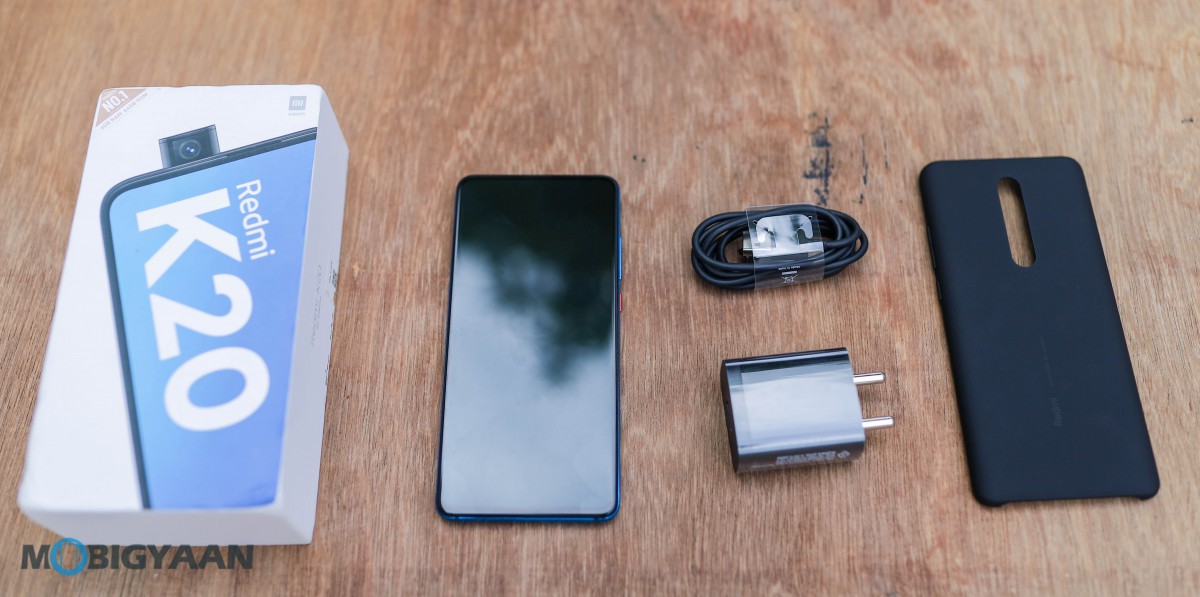
What’s in the box
- Redmi K20
- Protective cover
- USB Type-C cable
- Power adapter
- SIM ejector tool
- User guide and warranty card
Xiaomi Redmi K20 Specifications
- CPU: Qualcomm Snapdragon 730 octa-core processor
- GPU: Adreno 618 GPU
- RAM: 6 GB
- Operating System: Android 9.0 Pie with MIUI 10
- Display: 6.39-inch Full HD+ AMOLED HDR display with 2340 × 1080 pixels screen resolution, 91.9 percent screen-to-body ratio, DCI-P3 Color Gamut, and 19.5:9 aspect ratio
- Rear Camera: 48 MP primary sensor with Dual LED Flash, f/1.75 aperture, 1/2″ Sony IMX582 sensor, 0.8μm pixel size, 6P lens + 8 MP 1/4″ telephoto lens with 1.12μm pixel size, f/2.4 aperture + 13 MP 1/3″ 124.8° ultra-wide sensor, 1.12μm pixel size, f/2.4 aperture
- Front Camera: 20 MP snapper with f/2.0 aperture
- Internal Storage: 64/128 GB
- Connectivity: Dual 4G VoLTE, Wi-Fi 802.11 ac (2.4GHz + 5GHz), Bluetooth 5, GPS (L1 + L2 Dual Band) + GLONASS, NFC, and USB Type-C
- Other: In-display Fingerprint Scanner
- Colors: Flame Red, Carbon Black, and Glacier Blue
- Battery: 4000 mAh with 18W fast charging
Design & Build
The Xiaomi Redmi K20 has a gorgeous design, especially the back panel. It follows the “Aura” design philosophy of Xiaomi and the phone is offered in three color options — Glacier Blue, Flame Red, and Carbon Black. The unit we have for review is in Glacier Blue color.
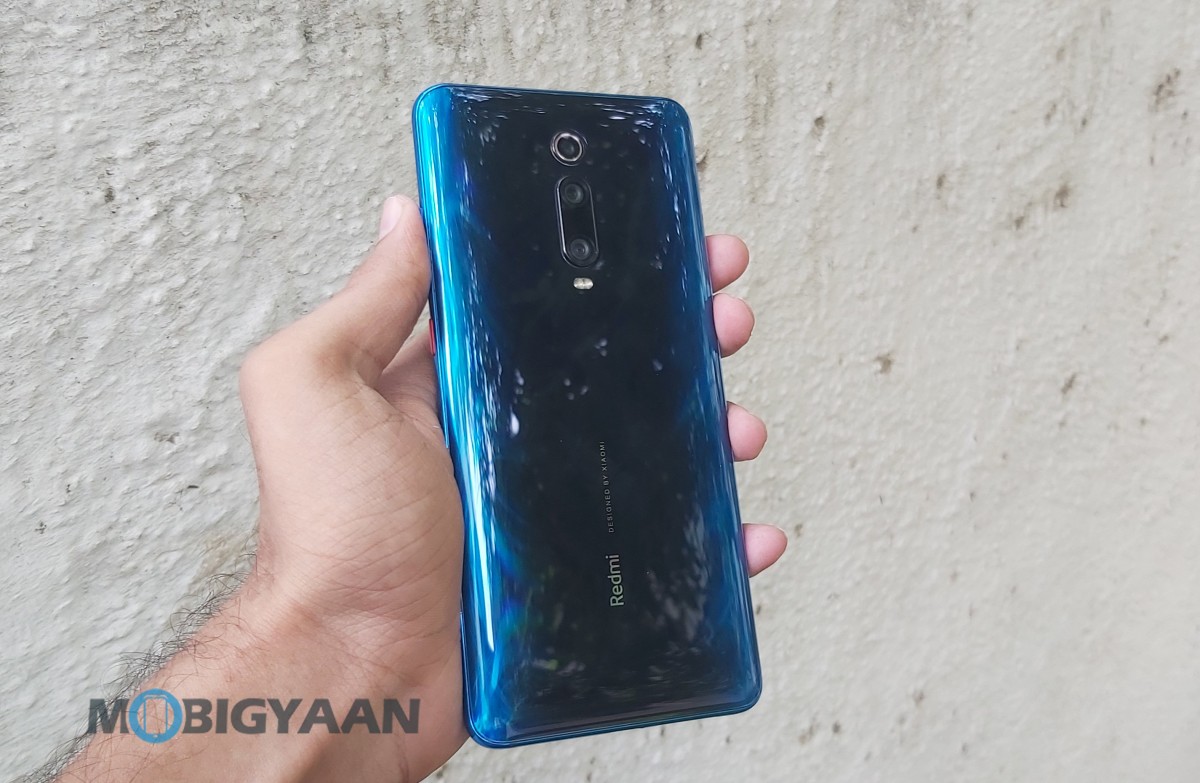
The front and the back of the smartphone have a Corning Gorilla Glass 5 layer, protecting them from minor scratches. As said, the phone has a gorgeous back panel, which has a unique pattern that adjusts according to the light. This gives a slightly different look to the phone in low-light and harsh-light scenarios.
The phone’s back panel is curved around the edges, which offers a pretty solid grip when holding it. While the front and the back panel has glass, the frame is made up of aluminum and there’s no gap visible between the frame and the glass. The triple rear camera module is placed in the top-center with sensors aligned vertically.
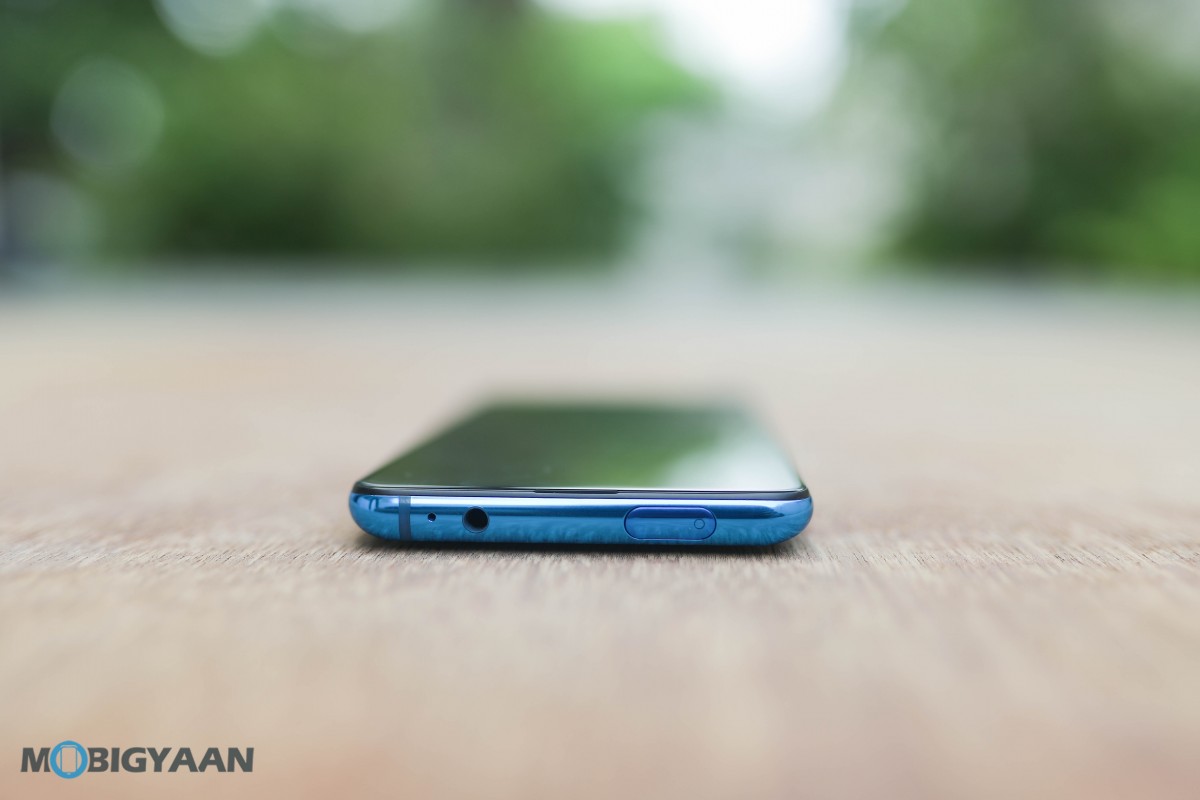
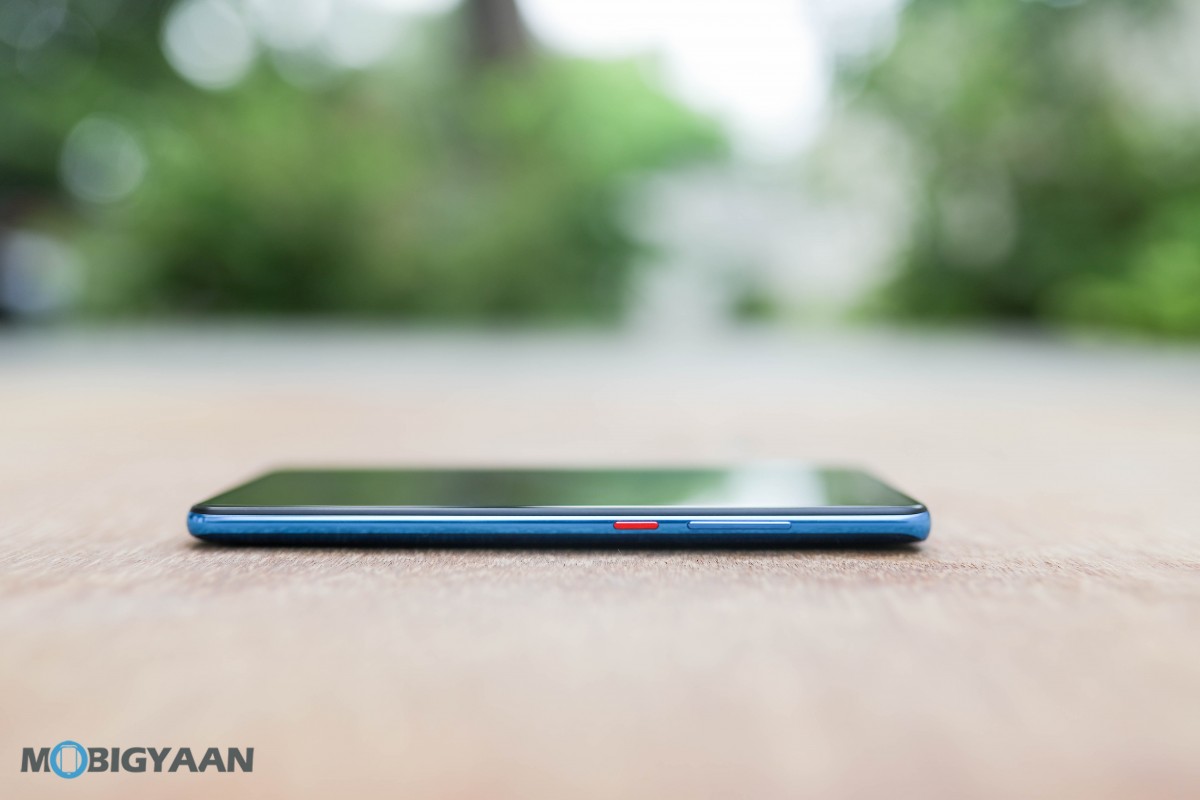
There’s a red-colored power button on the right side along with the volume rocker keys. While all the keys are in the color of the smartphone, the power key comes in red color, regardless of your phone’s color. The right side of the phone has nothing.
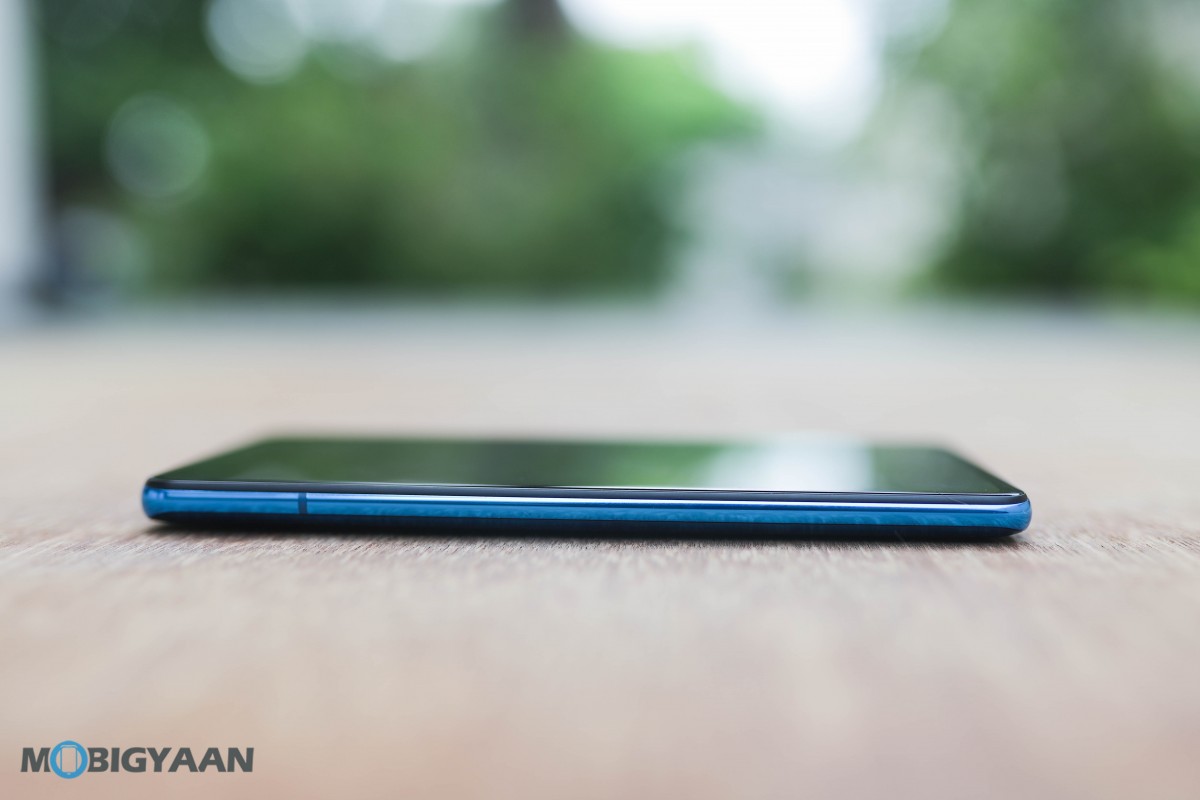
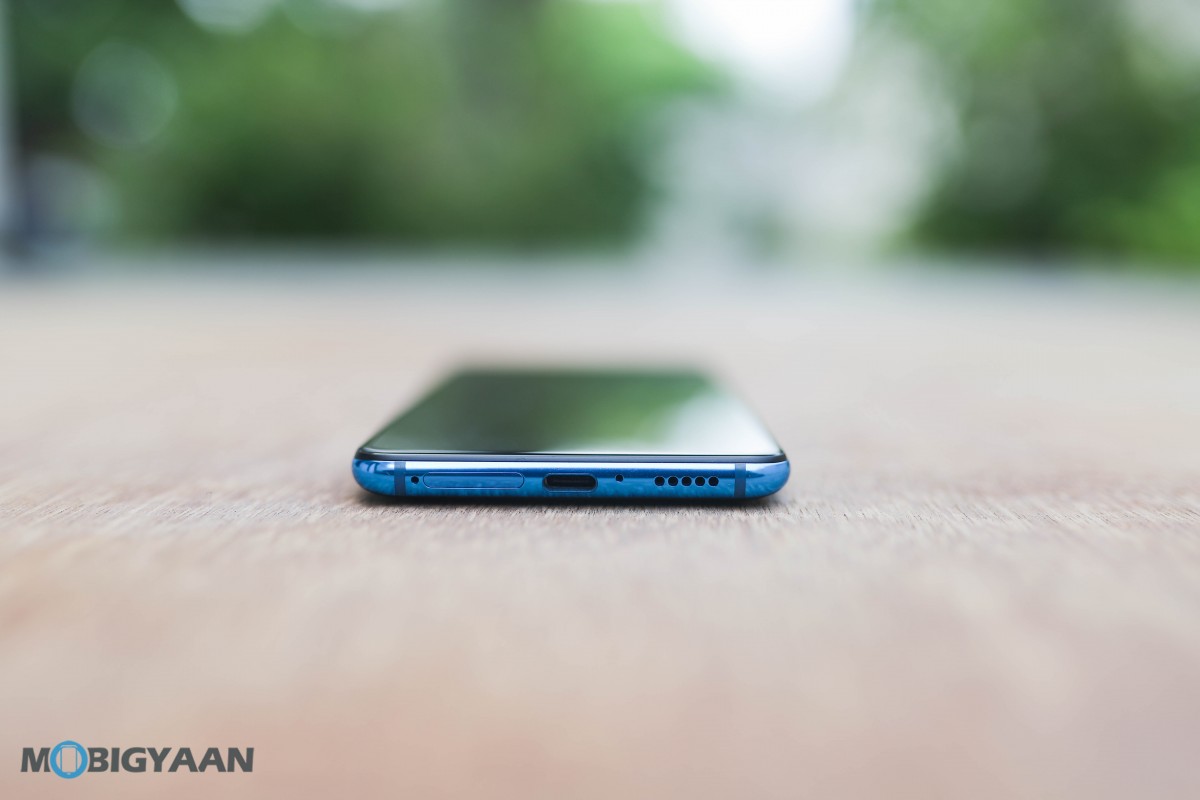
At the top, there’s a pop-up selfie camera towards the left and a 3.5mm headphone jack towards the right and a microphone. At the bottom, there’s a USB Type-C port, SIM card tray, as well as a microphone and a speaker grille.
Display
The smartphone flaunts a 6.39-inch Full HD+ AMOLED HDR display, which offers a screen resolution of 2340 x 1080 pixels and 19.5:9 aspect ratio. The screen-to-body ratio offered by the device stands at 91.9 percent, thanks to the notchless design.
For the first time, Xiaomi is offering an AMOLED display on the Redmi smartphone, which is a pretty solid move from the company. The display is quite bright and works very well indoors as well as outdoors.

Thanks to the use of an AMOLED panel, the visuals on the display appears quite sharp and it offers punchy colors with deeper blacks. The viewing angels offered by the company are also good. The smartphone has an in-display fingerprint sensor which is quite accurate.
But the fingerprint reader is a bit slow and you’ll have to keep your finger for a good second or two to get it working. While it is not as fast as the one in Realme X, it still recognizes fingerprint successfully four out of five times.
Overall, the smartphone’s display is impressive and it seems that this is one of the best displays that Xiaomi has offered in the Indian market.
Performance
The Xiaomi Redmi K20 is powered by the Qualcomm Snapdragon 730 octa-core processor, which is manufactured using Samsung’s 8nm LPP node. The octa-core processor comes with Kryo 470 cores where 2 Gold cores are clocked at 2.2GHz and 6 Silver cores are clocked at 1.8 GHz.
The SoC comes packed with Adreno 618 graphics processor, which the company claims offers 25 percent better performance over its predecessor. Further, the smartphone packs 6 GB of RAM and is offered in two storage options — 64 GB and 128 GB.
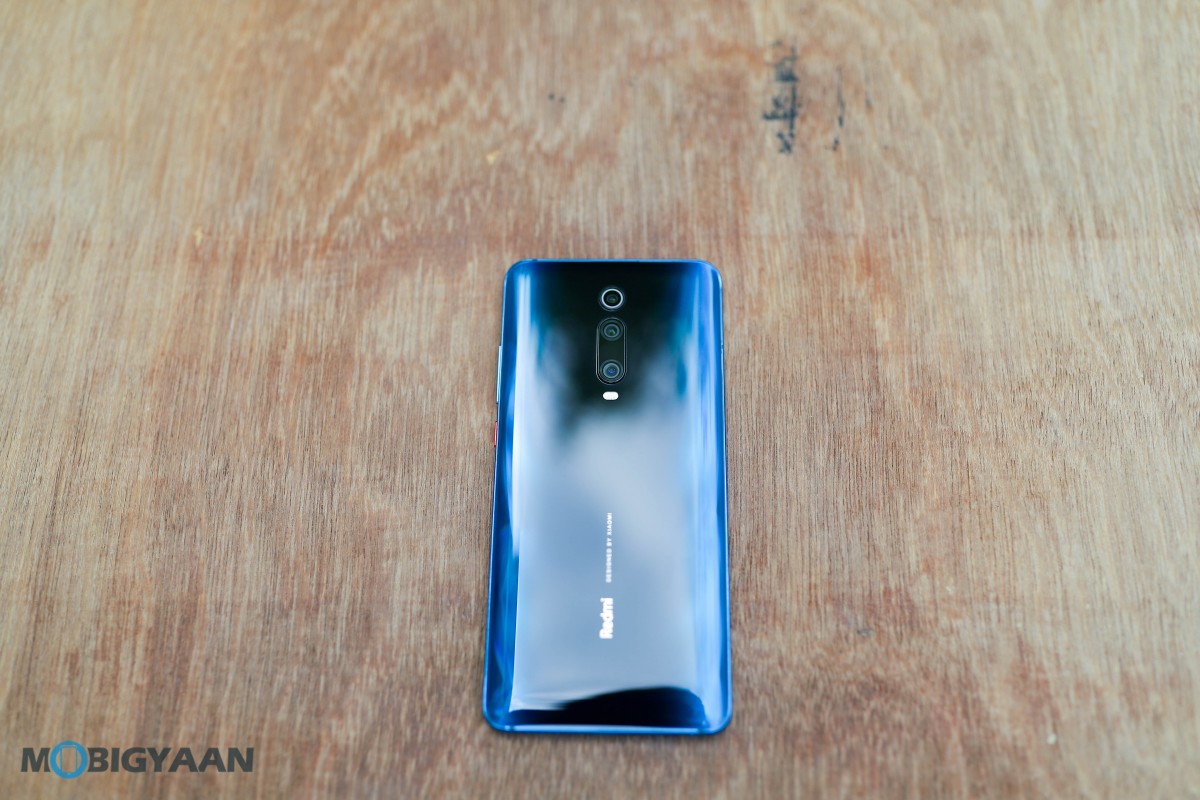
The performance of this SD730 chipset is pretty impressive. It performs all the daily tasks such as capturing images, browsing the internet, using a few apps at the same time and switching between them is fast. We didn’t experience any lags during our usage.
It also handled graphic-intensive games such as PUBG Mobile very smoothly. Playing the game in the highest graphic configuration worked smoothly without any glitches and no noticeable frame drops. However, at the time of our review, the HDR option wasn’t available and was tagged as “coming soon”.
The smartphone seems to have issues with heating. The phone gets heat up at the backside during the long gaming sessions but not hot enough that you can’t use it. To improve the gaming experience of the Redmi K20, Xiaomi has introduced Game Turbo 2.0, which reduces network delay and also optimizes touch latency.
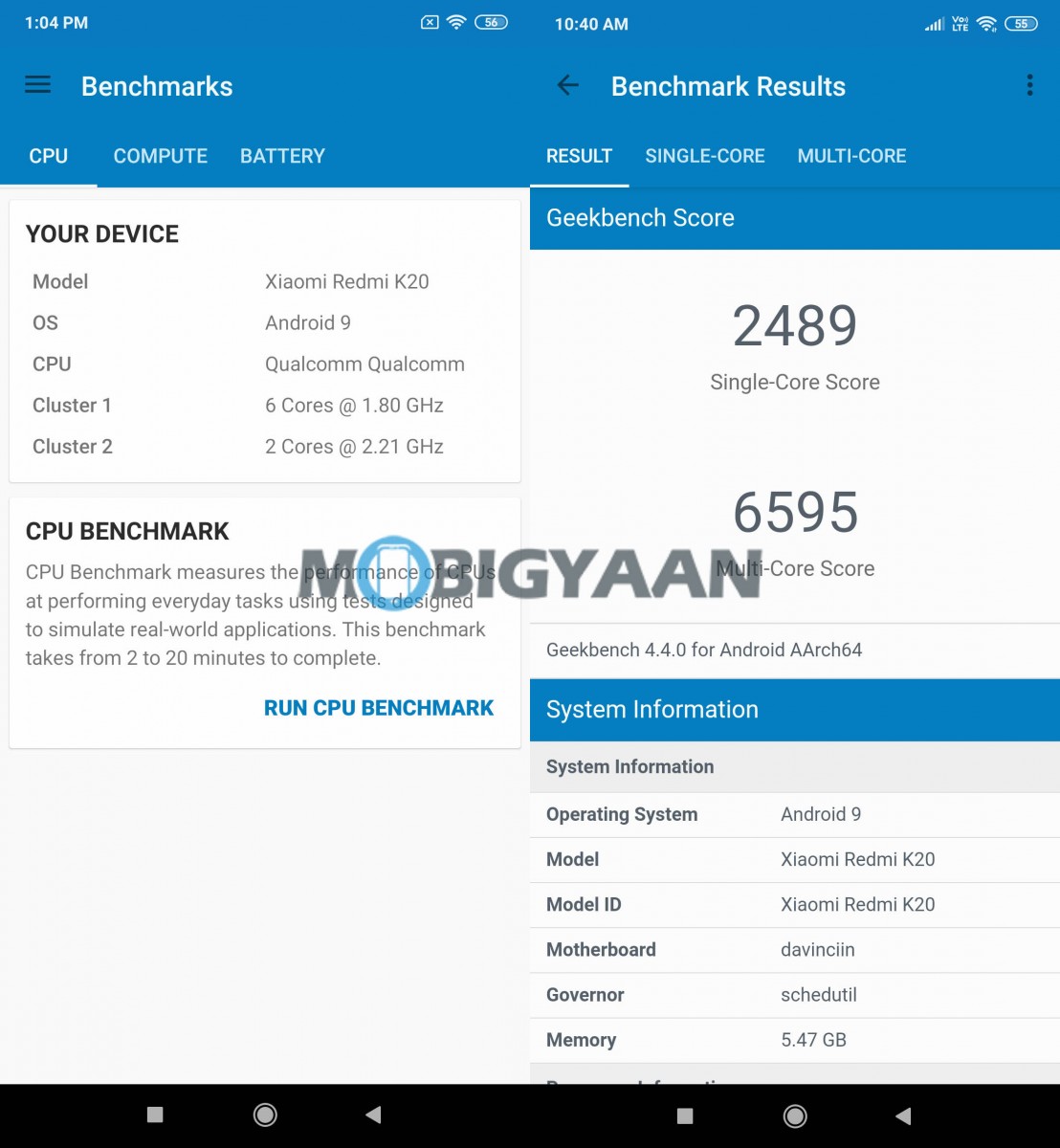
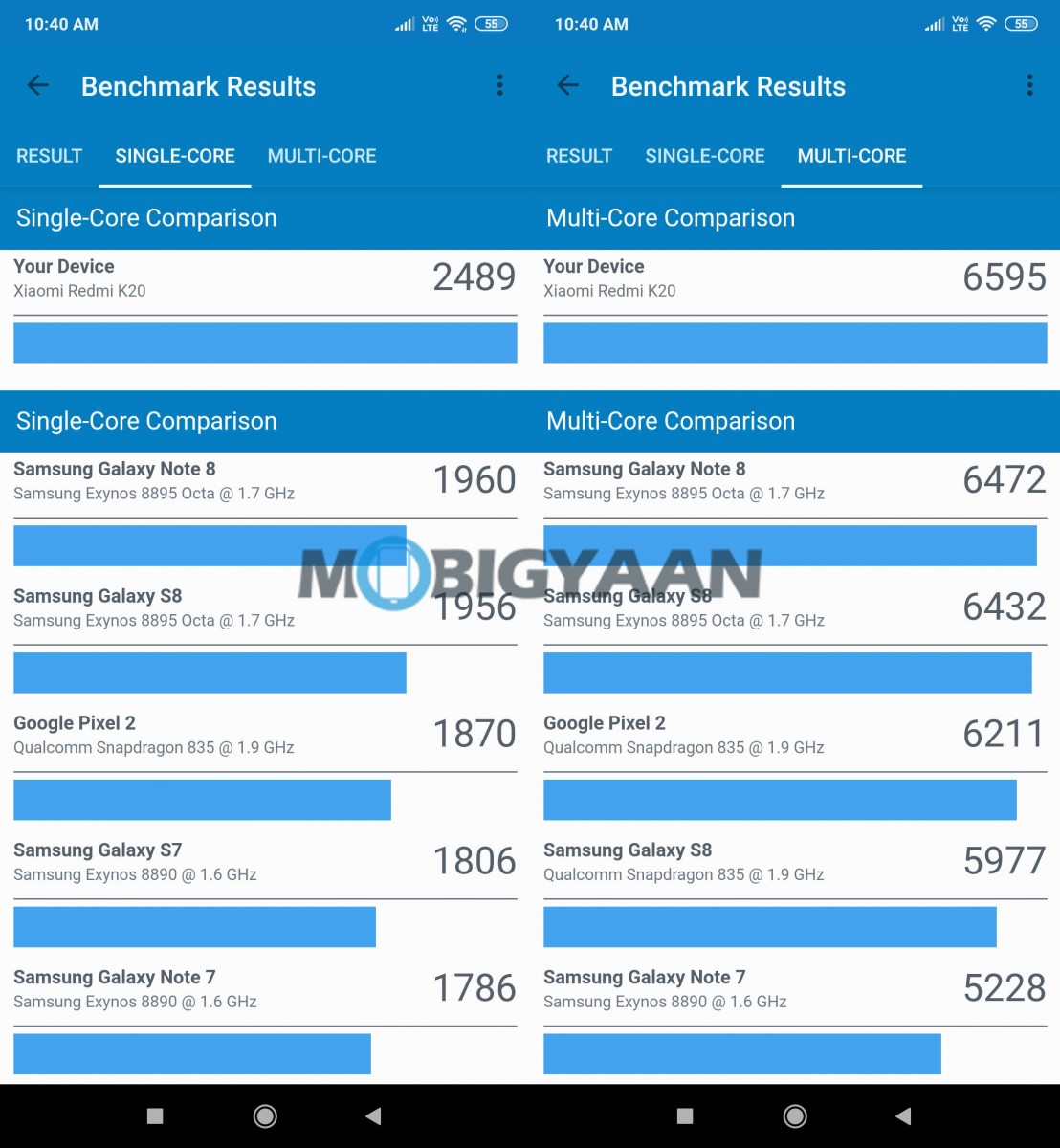
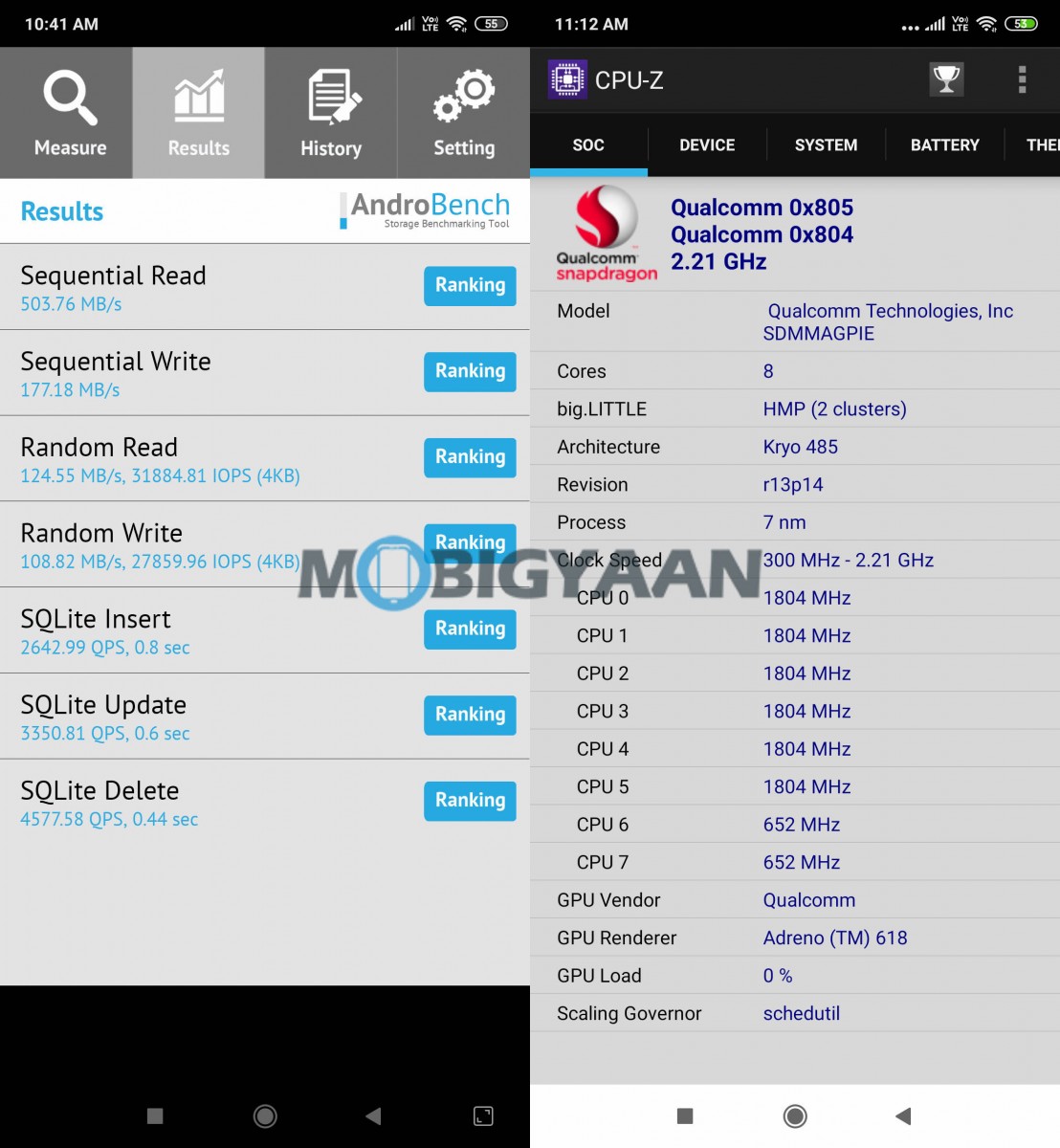
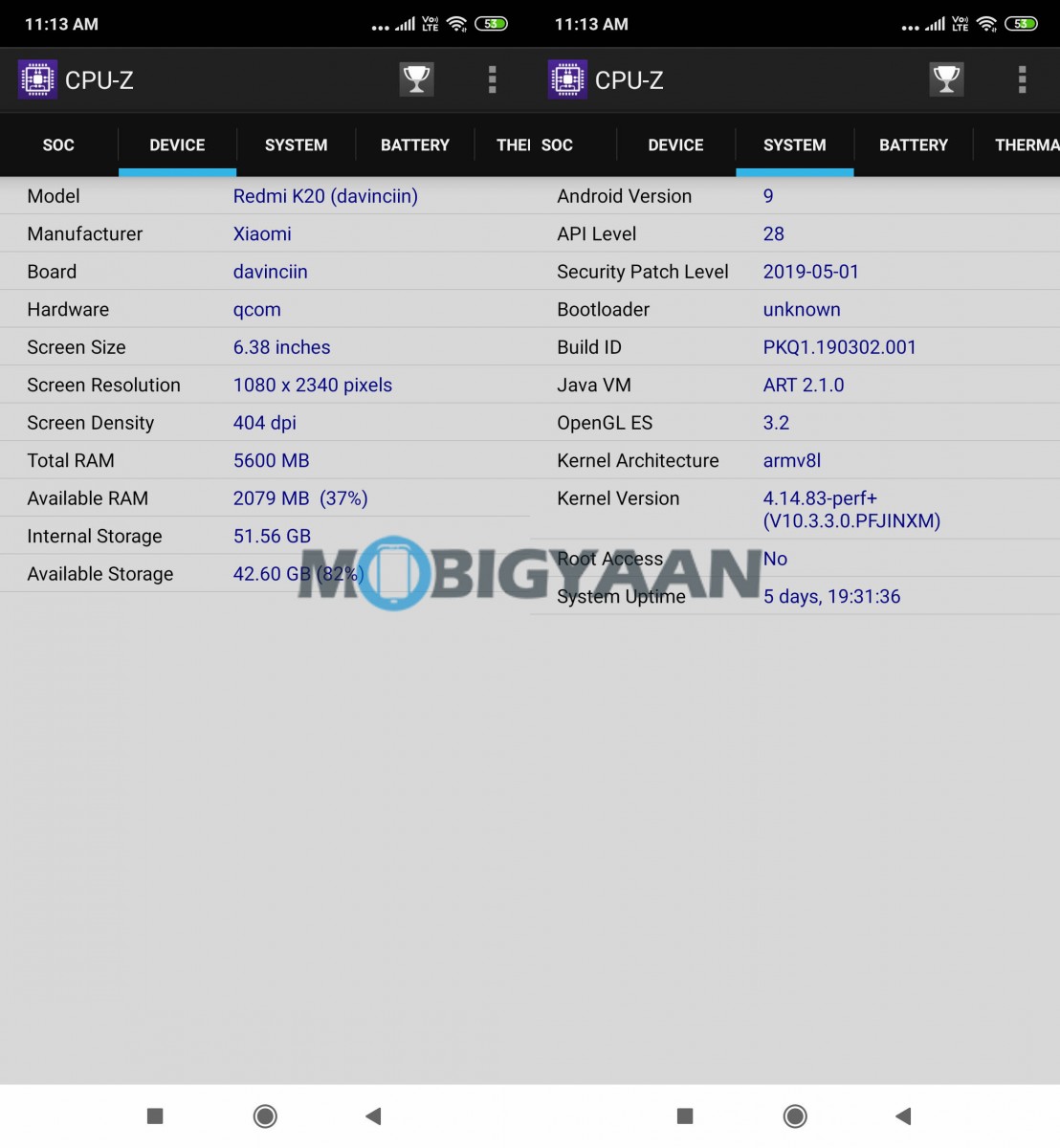
As for the benchmark tests, the Redmi K20 smartphone scored 2,489 points in the single-core test and 6,595 points the multi-core test, which is quite good. In the SlighShot Extreme OpenGL ES 3.1 test using 3DMark gaming benchmark, it scored 2,132 points overall, which graphics score of 1,988 points and the physical score of 2,857.
Camera
The Xiaomi Redmi K20 features a triple camera setup on the backside with all the sensors and the LED flashlight — all aligned vertically in the top-center position.
It comes with a 48 MP Sony IMX586 primary sensor with 1.6μm large pixel, 6P, and f/1.75 aperture. It is coupled with an 8 MP telephoto lens with 2x optical zoom, f/2.4 aperture, and a 13 MP 124.8-degree super wide-angle lens with f/2.4 aperture.
On the front side, it features a self-elevating pop-up selfie camera, making it the first smartphone from the company to have this feature. It comes with a 20 MP sensor with f/2.2 aperture and has a Sapphire glass cover.
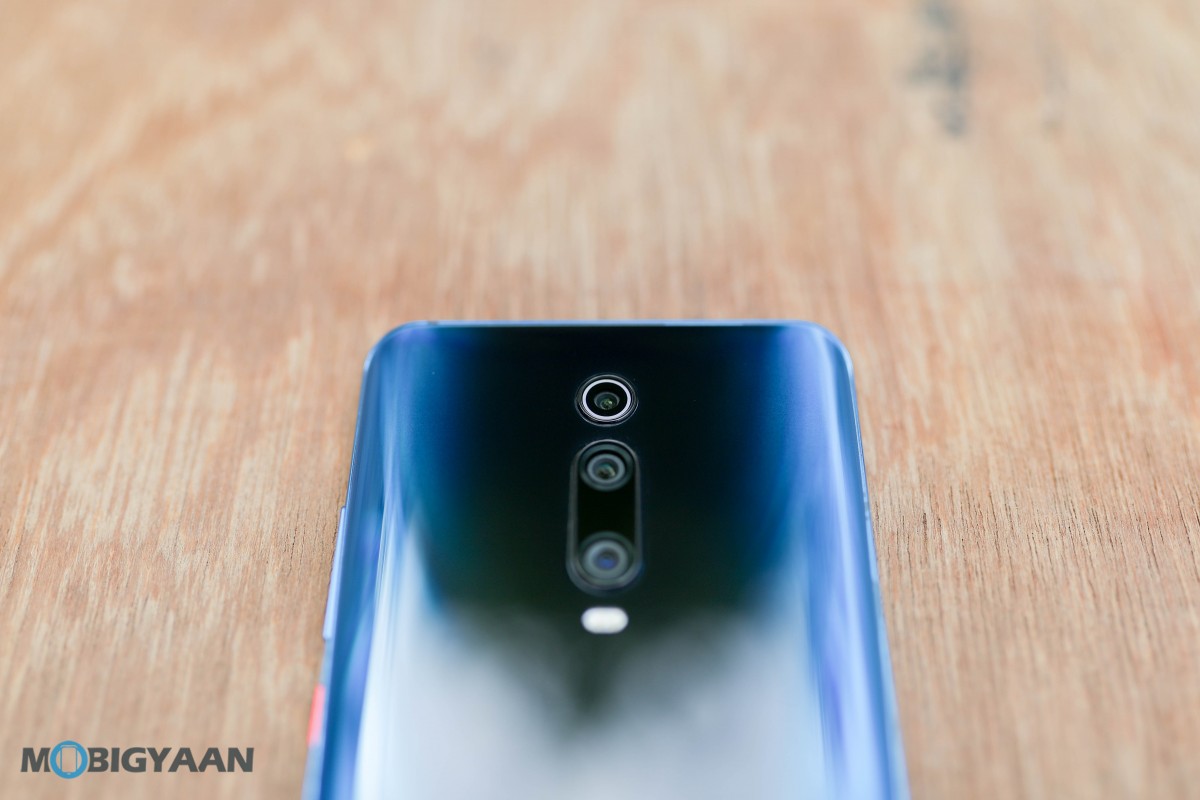
The back camera on the Redmi K20 comes with support for 2x optical zoom and 10x digital zoom. It also supports video recording at 960 frames per second. While the phone doesn’t have OIS, it does come with EIS for video stabilization.
The camera’s performance is swift when it comes to autofocus and shutter speed. The result of the phone’s back camera is impressive as it takes really good images during the daylight. The images captured using the phone offers good sharpness and captures vibrant colors.
Sometimes the images captured seemed a bit overexposed and oversaturated. However, the saturation level is a personal choice and some of you might like over-saturated images. The portrait mode works quite well and captures images with nicely blurred background and sharp edges.
As for low-light photography, with ambient lighting, the images turn out to be good. Shooting images in low-light situations such as inside the house or under the streetlights won’t be an issue. However, noise does creep in now and then in the low-light images.
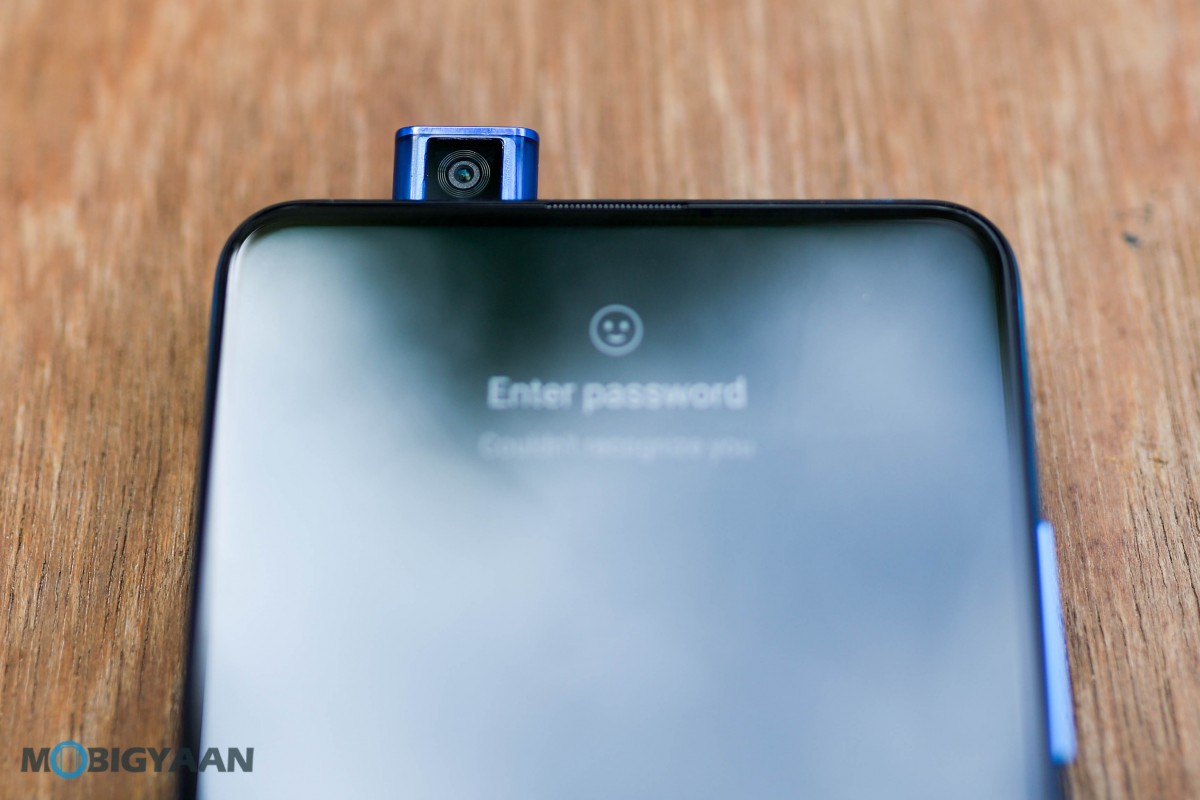
Coming to the pop-up camera, the first issue we have is with the speed on the camera sensor getting elevated. It’s quite slow compared to smartphones from Oppo and Vivo. It’s also slow when compared to its primary competition — Realme X.
However, the result from the front-facing camera is average. The images captured using the 20 MP camera sensor are quite detailed but has issues with light balance. Also, the images seem artificial as the camera heavily softens the skin.


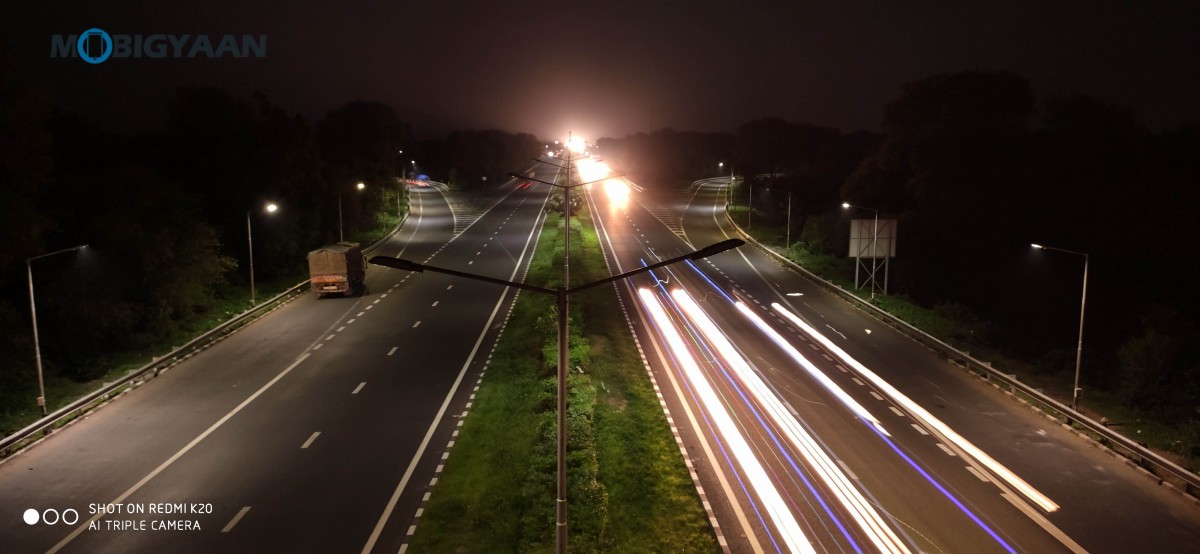


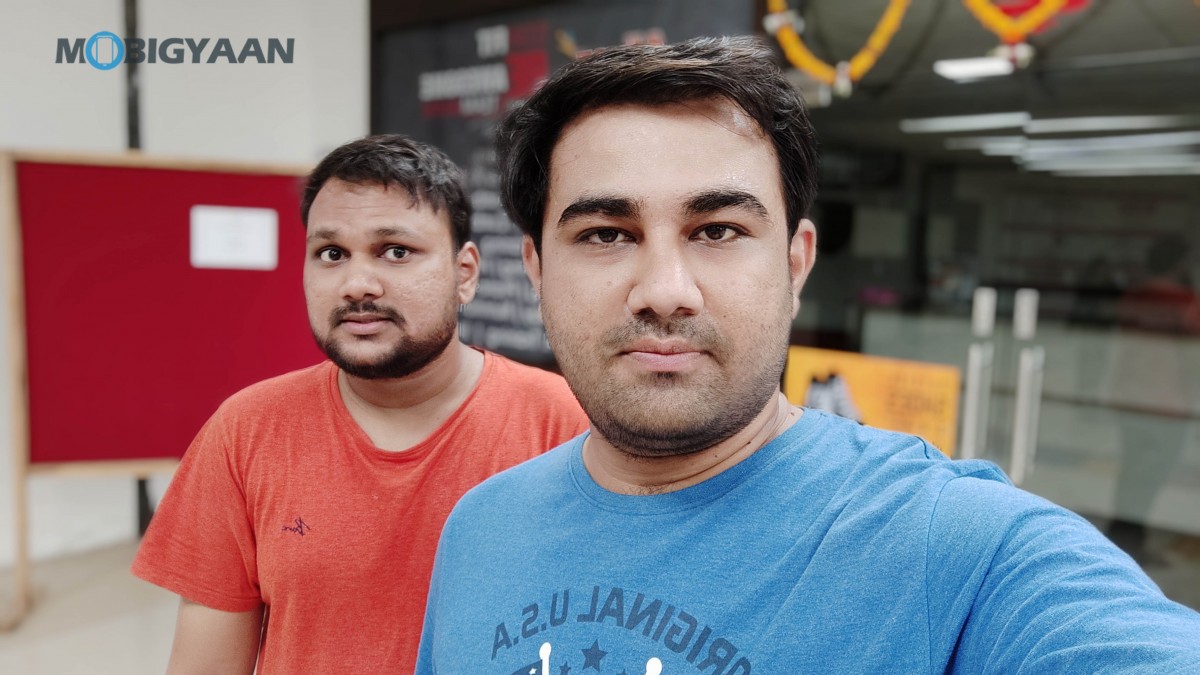
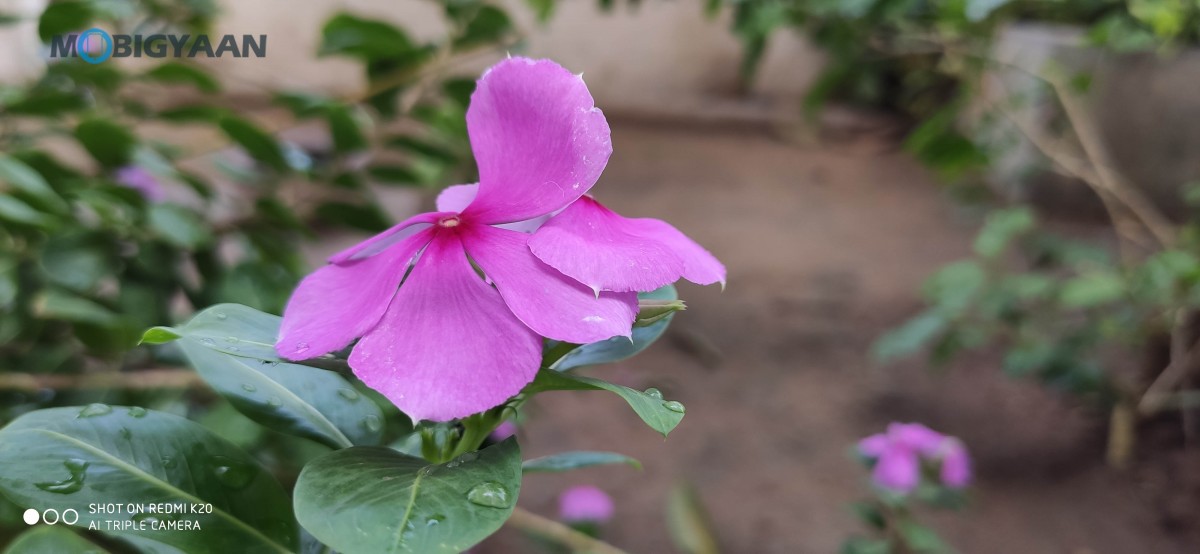


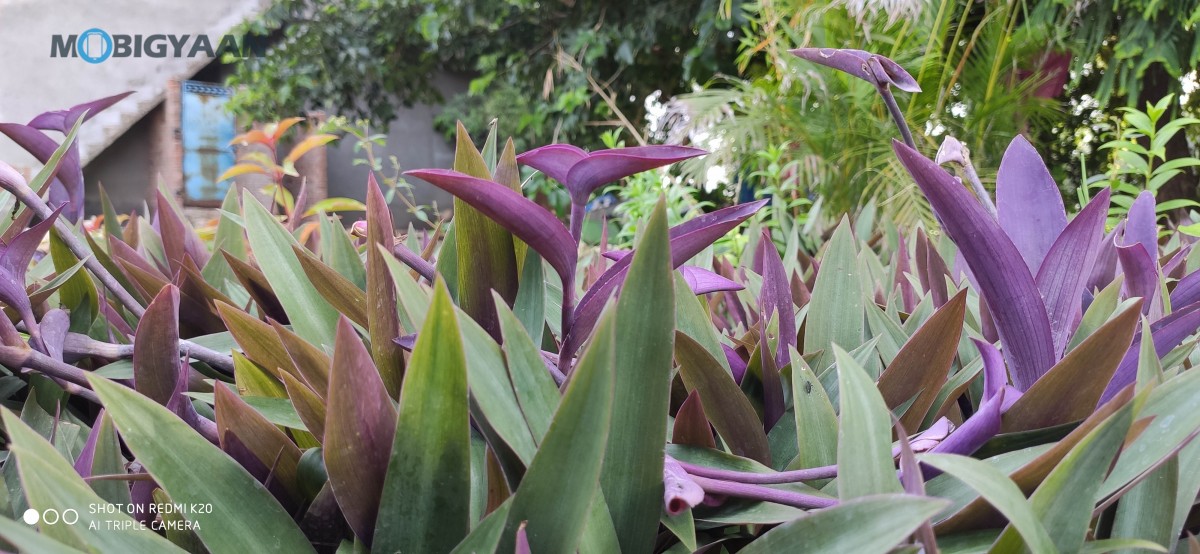


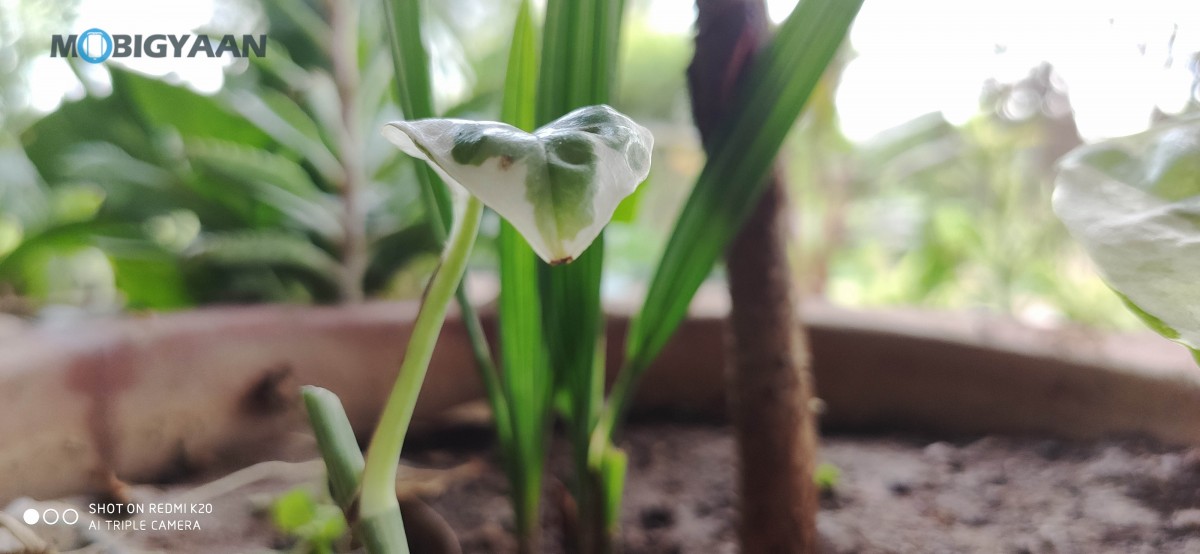



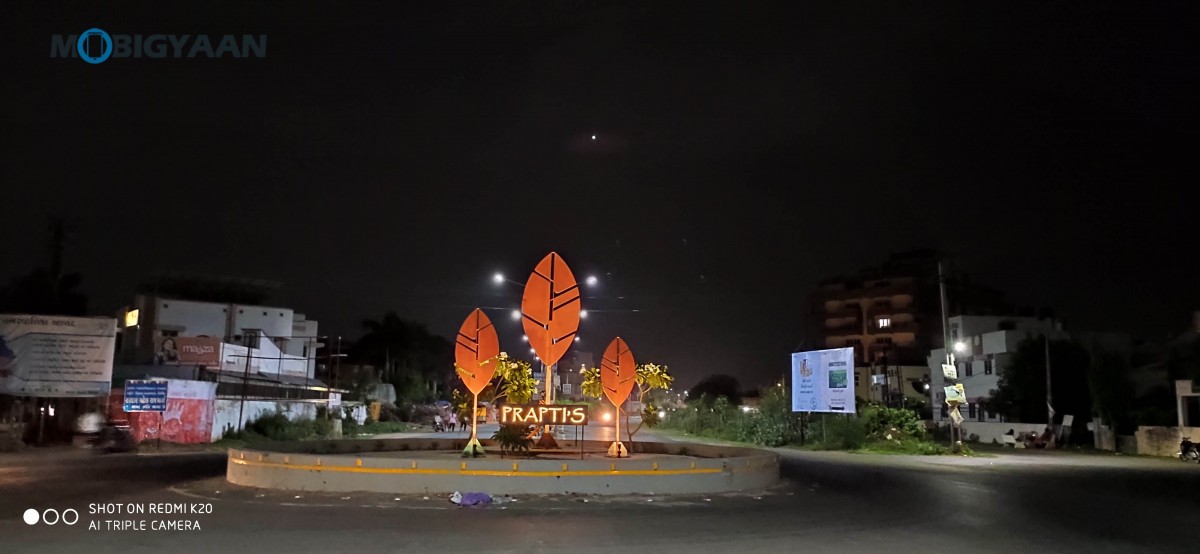
Software
The phone runs Android 9 Pie operating system out-of-the-box with the company’s own MIUI 10 interface on top. Interestingly, the smartphone comes with Poco Launcher pre-installed which makes quite a difference to the device.
One of the major change is that it introduces the App Drawer, which is missing in the MIUI launcher. Also, the company has introduced system-wide Dark Mode, a feature which is scheduled to arrive with the next major Android update — Android Q.
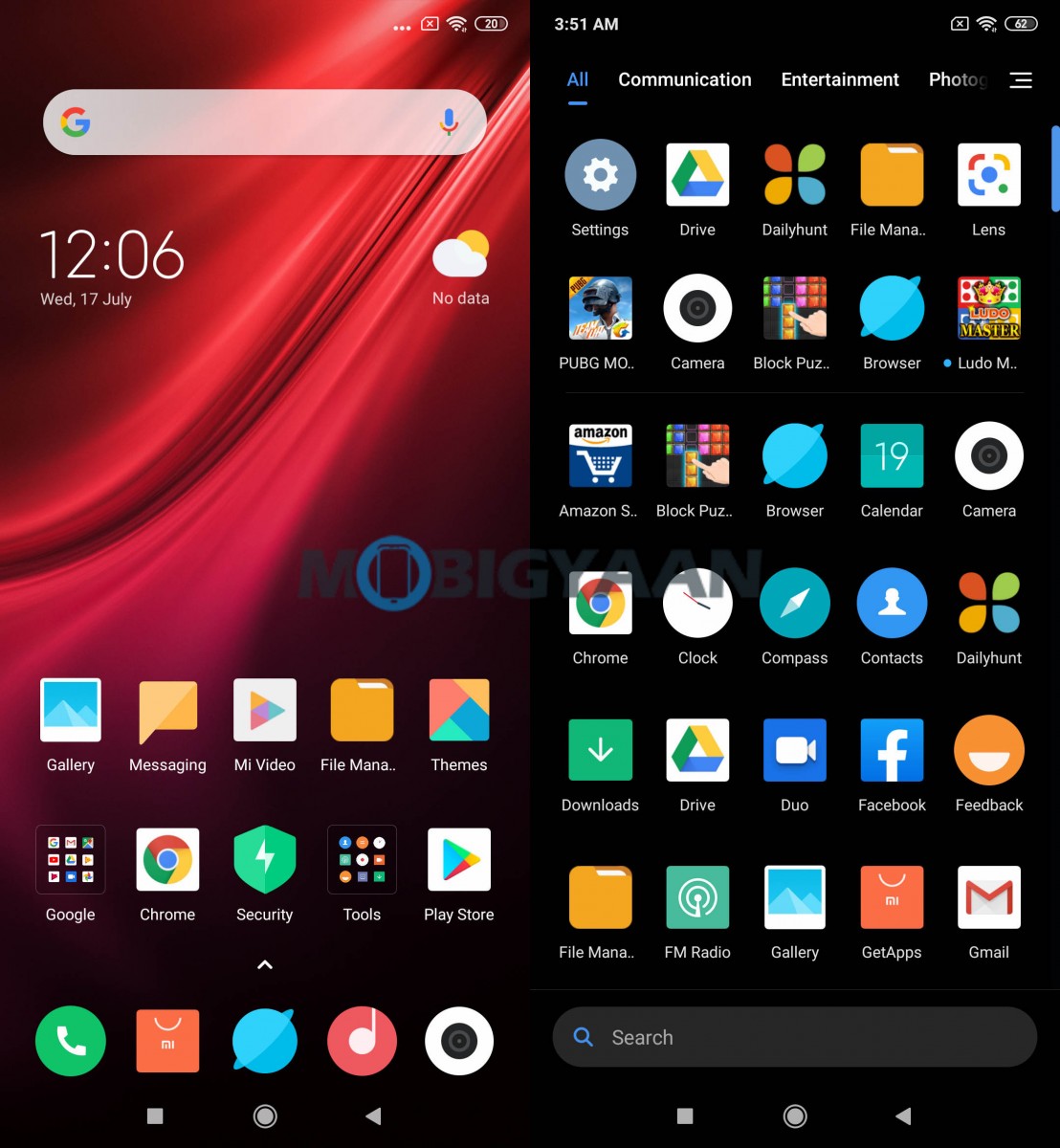
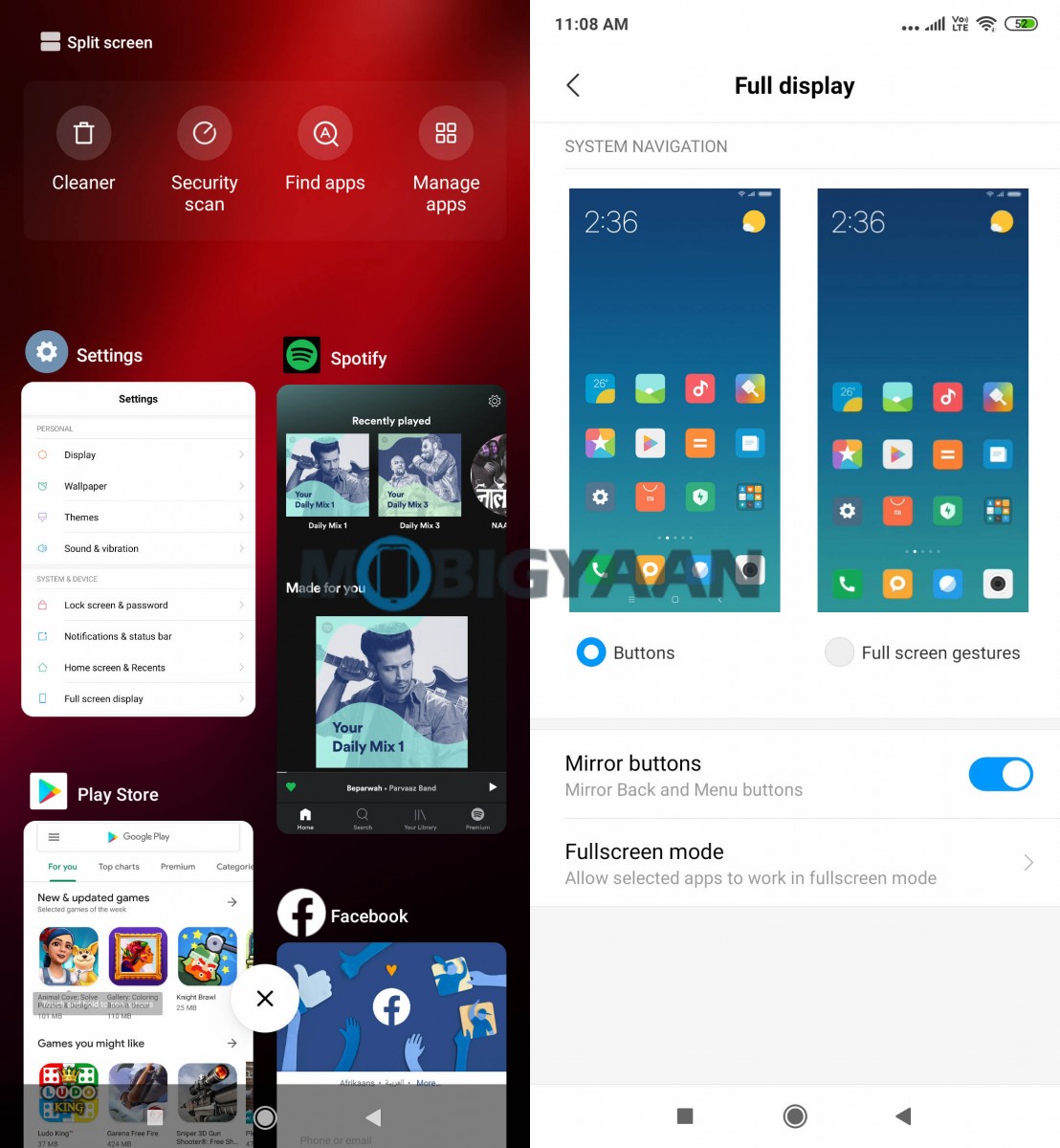
Given that the smartphone has a full-screen design, the company is offering two options to choose from for using the devices — navigation keys and gestures. The performance is quite smooth with both the options. However, you may find it a bit difficult to use keyboard during the gesture mode as it starts from the bottom of the screen, which isn’t easy to use.
The MIUI also offers some additional features such as anti-flicker mode, reading mode, second space, dual apps, etc. which you might be familiar with if you have used MIUI before. However, there’s one complaint is that the phone comes with a lot of bloatware.
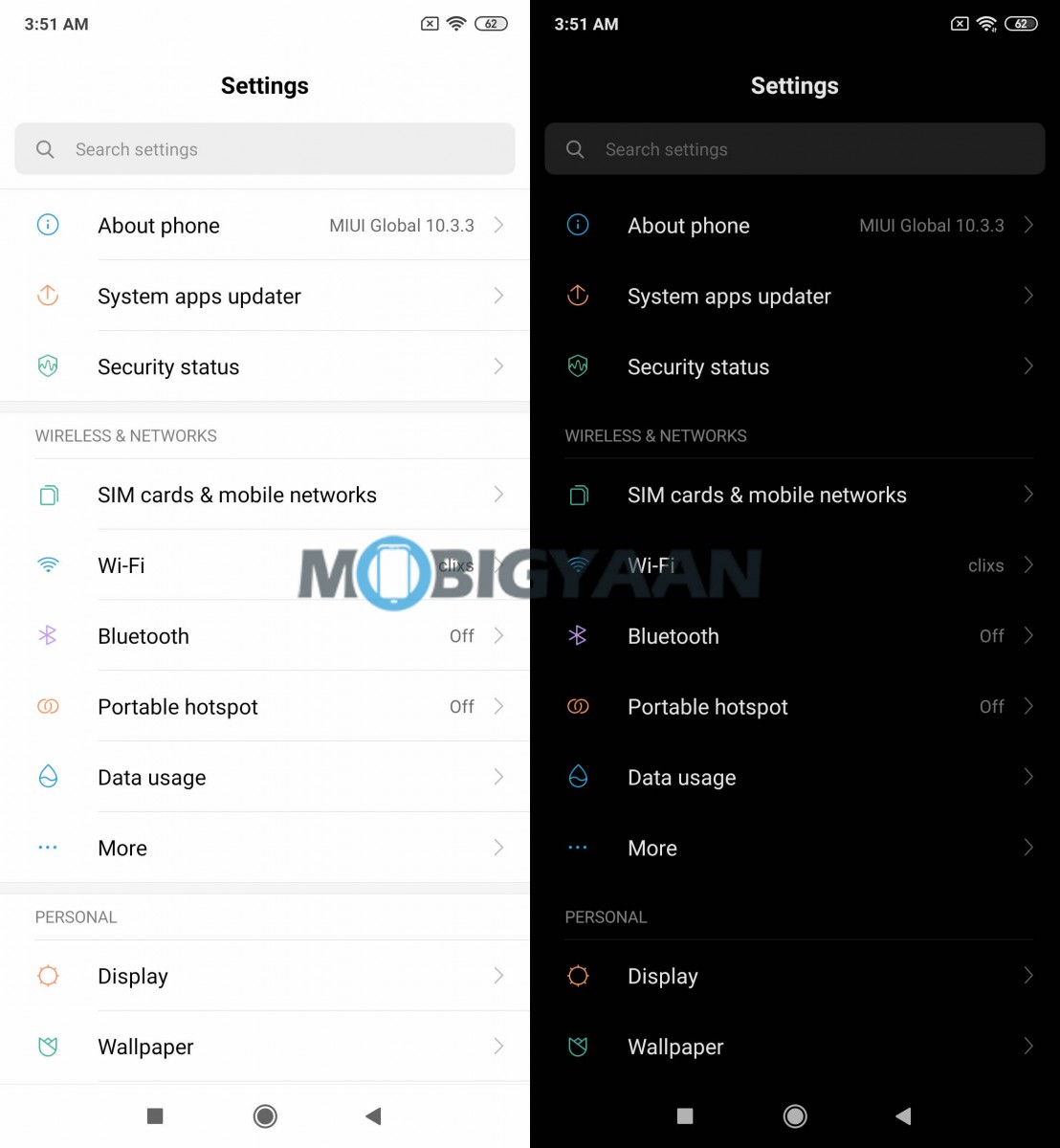
The Game Turbo mode on the smartphone houses all the installed games in a carousel and offers granular access to game settings. For PUBG Mobile, it allows you to control the touch and repeat touch latency and also allows you to mark areas to prevent accidental touches.
The phone also supports AI Face Unlock feature but the issue is that you need to swipe up the lock screen for the Face Unlock feature to work which is not practical. It should work when the power button is pressed. Hopefully, the company will add this feature in the new update.
Battery and Others
The Redmi K20 is powered by a 4000 mAh battery and comes with support for 18W fast charging. The power adopted in the box also has 18W ratings for fast charging. The phone has a USB Type-C port to charge the battery.
The battery life offered by the smartphone is quite impressive. With normal usage such as listening to music, watching videos, gaming for a few minutes, and using social media apps, the phone lasted through the whole day. The phone provides a screen-on time of around five hours, which is good.
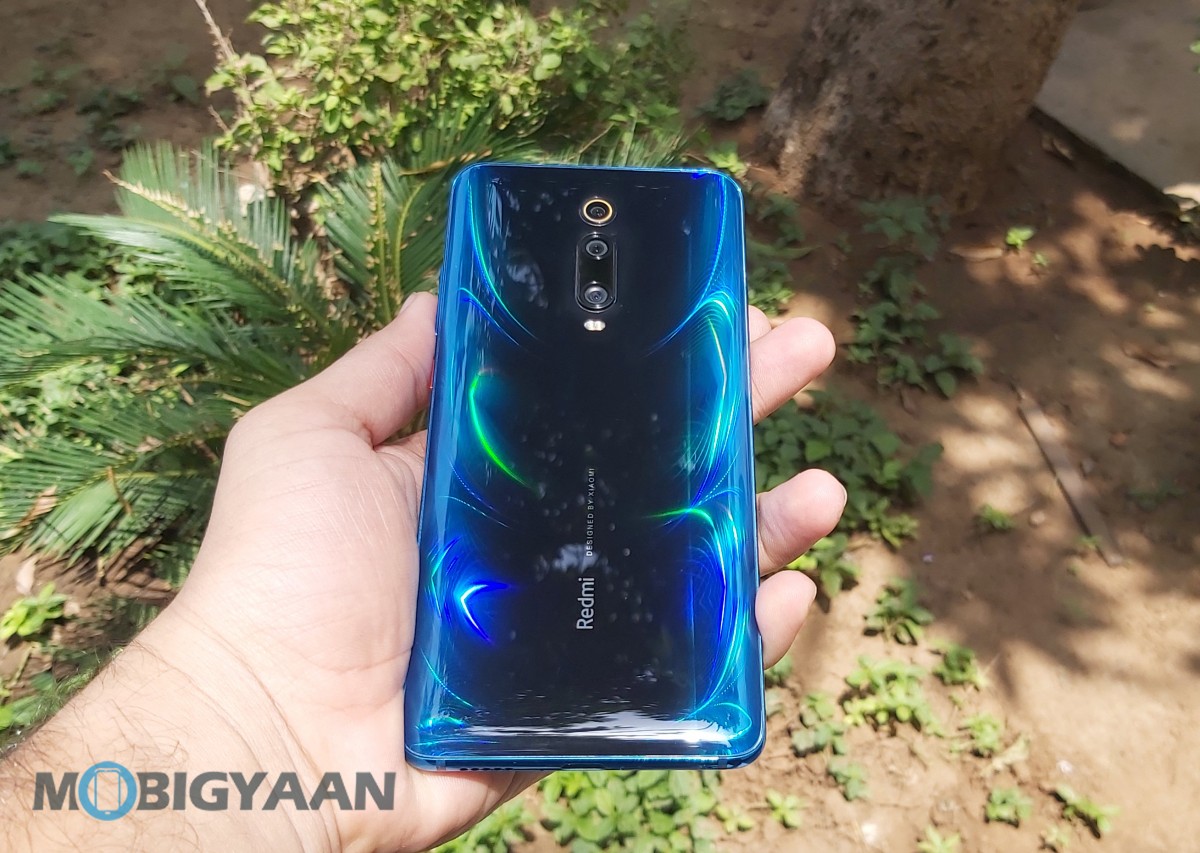
Now coming to the audio department, the phone comes with a pretty good speaker as it offers loud and crisp sound. The call quality is also good and there was no issue in hearing the voice from either side.
As for the connectivity options, the smartphone comes with support for Dual SIM, Dual VoLTE, Wi-Fi 802.11 b/g/n/ac (2.4 GHz + 5 GHz), Bluetooth 5, GPS (L1 + L2 Dual Band) + GLONASS, and NFC.
Verdict
The Xiaomi Redmi K20 is quite a good offering in this price segment. It covers all the features that are currently trending — full-screen design, in-display fingerprint scanner, triple rear camera, and a pop-up selfie camera.
The phone comes with a good design, an impressive display, solid performance, capable rear camera, and smooth software. The only thing that could have been improved is the pop-up mechanism and the selfie camera.
The Redmi K20 is a complete package and for a price of Rs. 21,990 for the 6 GB RAM and 64 GB internal storage model, it’s a good buy. Other alternatives for this one includes Realme X and Vivo Z1 Pro. If you are still confused between the Xiaomi Redmi K20 and the Realme X, wait for a couple of days as our review of the Realme X will be out soon.
